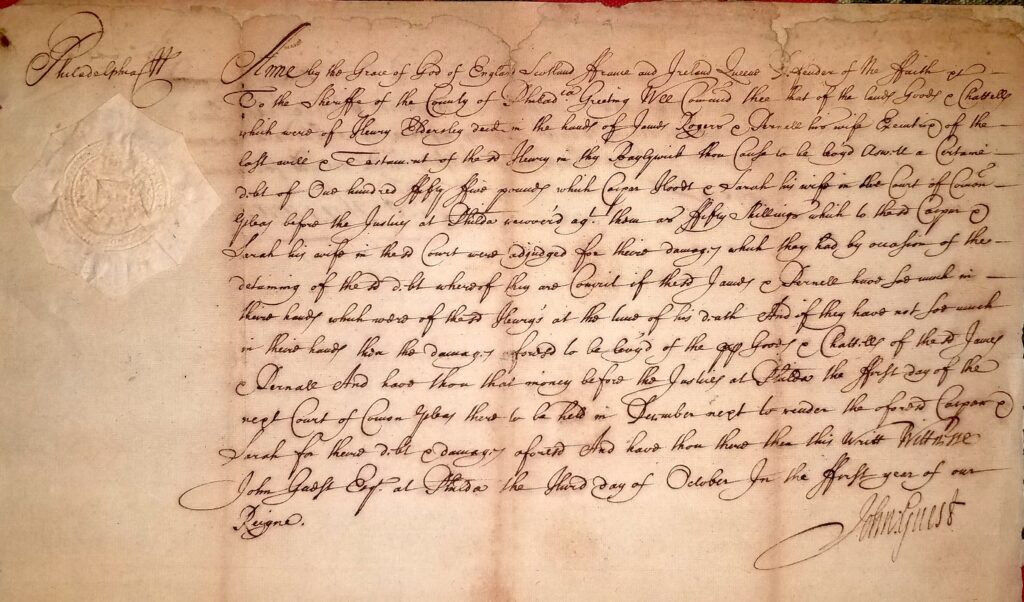Introduction:
The term writ refers to a formal, legal document that orders a person or entity to perform or to cease performing a specific action. Writs are drafted by judges, courts, or other entities that have administrative or judicial jurisdiction. These documents are part of common law and are often issued after a final decree is made. Orders, warrants, bearings, summons, and so forth are all basically writs.
Who can file a writ petition?
A writ request can be documented by any individual whose Fundamental Rights have been encroached by the State. Under a Public Interest Litigation, any open energetic individual may document a writ request in light of a legitimate
concern for the overall population regardless of whether his own Fundamental Right has not been encroached.
Types of Writs:
• Habeas corpus
• Mandamus
• Quo-warranto
• Prohibition
• Certiorari.
Habeas Corpus:
It is a real sense that signifies “to have a body of”. This writ is utilized to deliver an individual who has been unlawfully confined or detained. By ideals of this writ, the Court coordinates the individual so confined to be brought before it to analyze the legitimateness of his detainment. Assuming the Court reasons that the detainment was unlawful, it guides the individual to be delivered right away.
Case Law: Asma Jillani vs Government of Punjab PLD 1972 SC 139
Mandamus:
A writ of mandamus, which in Latin signifies “we order” or once in a while “we command”, is the name of this right writ in the common law. It is given by a superior court to force a lower court or an administration official
to perform an obligatory act. Mandamus is an order by the Supreme Court or High Courts to any open power to do or not to accomplish something in the idea of public obligation. It is given against the people or specialists who neglect to play out their compulsory obligations. For the motivation behind giving a writ of mandamus, the official should have a public obligation and should neglect to perform such obligation.
Case Law: Sheikh Asim Farooq vs Federation of Pakistan, W.P. No. 192069 of 2018
Quo-Warranto:
It signifies ‘what is your authority?’ It is an Order scrutinizing the authority of an individual holding a public office. It is given against the holder of a public office calling upon him to show with what authority he holds such office. The object of this writ is to control the leader’s activity in making arrangements to the public workplaces and furthermore to shield general society from usurpers of public workplaces.
Case Law: Maulvi Tameezuddin vs Federation of Pakistan PLD 1955 Sindh 96
Prohibition:
It signifies ‘to prevent’. Each Court is relied upon to act inside the restrictions of their purview. A writ of preclusion is given to keep a substandard Court or Tribunal from surpassing its locale, which isn’t legitimately vested, acting without a ward, or acting contrary to the standards of common equity. The writ of Prohibition can be given against the Courts as well as against the specialists practicing legal or semi-legal capacities.
Case Law: Nisar Ahmed vs Additional Secretary 1978
Certiorari:
It intends ‘to certify’. Certiorari is a curative writ. It is an Order by the Supreme Court or the High Courts to a substandard Court to eliminate a suit from such second-rate Court and mediate upon the legitimacy of the procedures or to suppress the Orders of the sub-par Court. The Writ of Certiorari can be given against any second-rate Court as well as against a body practicing legal or semi-legal capacities. This writ is given under the administrative or unique ward and not under the redrafting purview. Any individual whose central right is abused can apply for a Writ of Certiorari.
Case Law: Goonesinha v. O.L.de Kretser AIR 1945 PC 83
Writ Jurisdiction in Pakistan:
Whereas in the constitution of 1973, under article 199 without using their technical names, the writs of prohibition and mandamus were provided by clause (2) (a) (i), the writ of certiorari by clause 2 (a) (ii), the writ of habeas corps by clause 2 (b) (i) and the writ of quo warranto by clause 2 (b) (ii) of article 199. The fact that writs not have been mentioned by their technical names, has been interpreted by the courts as giving wider jurisdiction to the courts and not restricting them to the limited circumstances in which a particular writ could be issued. Despite the view of courts that the new jurisdiction under article 199 of the constitution was significantly different from the traditional writ jurisdiction practice has proved that the courts, whenever called upon to exercise their power, have been dealing with cases as if they were exercising the well-known jurisdiction, partly to maintain the distinction between different classes of cases and partly to enable them to apply the general guiding principles for the issuance of writs, which are fairly settled in relation to each writ. The courts generally follow the well-settled writ procedure with a cosmetic change that writs are now termed as orders under Article 199 of the constitution.

